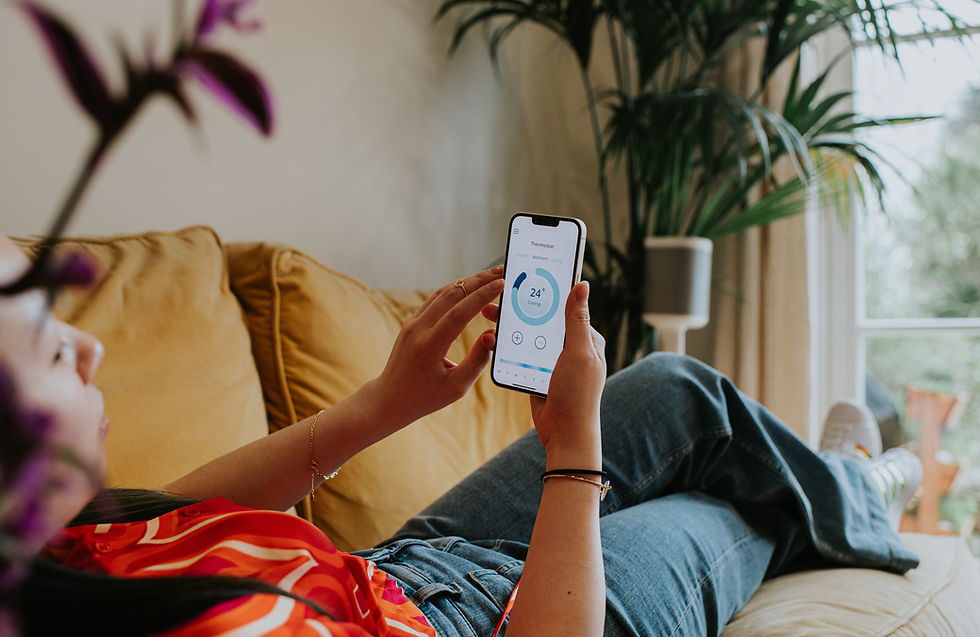Screen Addiction: Down the Rabbit Hole Of Dopamine, Anxiety & Depression
- Therapy Place
- Mar 8, 2023
- 3 min read
Updated: Feb 14

When it comes to modern communication technology, screen addiction is an increasingly prevalent concern. In what is becoming an exponentially digitized world, our dependency on electronic devices is growing. It’s no surprise that we’re becoming increasingly addicted to the screens we call home for much of our waking time (as well as the time that, for many of us, would have been better spent sleeping... or exercizing... or engaging with loved ones more directly....) So let’s talk about the risks, the causes, and the solutions to this mounting dilemma.
The Risks of Screen Addiction
Screen addiction is more than just a ‘bad habit’. It has been linked to various mental health problems, including depression and anxiety. As we shift our attention more and more from the physical world to the virtual world, our social skills decline, ultimately creating feelings of isolation. On top of this, engaging with the blue light emitted by digital devices can disrupt the natural rhythms of our bodies, leading to disturbances in sleep patterns.
The Causes of Screen Addiction
Several factors can contribute to screen addiction. One of the main reasons is the immediate gratification that screens provide. Social media platforms and other digital entertainment platforms are designed to keep users engaged and addicted by providing instant rewards like likes, comments, and notifications. As a result, people find it difficult to put their devices down and become addicted to the screen.
Dopamine is a neurotransmitter that is responsible for the brain's reward and pleasure centers. Whenever a person engages in a pleasurable activity like using social media, dopamine is released in the brain, which creates a sensation of pleasure and reward. The more frequently a person engages in such activities, the more dopamine is released, leading to a craving for more of the same activity. Over time, the brain becomes desensitized to the dopamine release, requiring a higher level of stimulation to achieve the same level of pleasure, leading to addiction.
Other factors that contribute to screen addiction include boredom, loneliness, anxiety, and depression. Screens provide an easy escape from reality and can provide comfort to those who feel lonely, anxious, or depressed.
A deeper dive into the Dopamine System in Screen Addiction
As mentioned earlier, the dopamine system plays a significant role in screen addiction. Whenever a person uses screens, dopamine is released in the brain, creating a pleasurable sensation and a desire to use screens more frequently. Over time, the brain becomes desensitized to the dopamine release, requiring a higher level of stimulation to achieve the same level of pleasure, leading to addiction. Conversely, we might experience withdrawal of the dopamine we have become accustomed experiencing when we "get off" our devices. Consequently, many of us experience anxious or depressive symptoms, which can be unpleasant, even if subtle. Reflexively (and often in a semi-mindless, "autopilot" kind of way), many of us simply reach out for another "hit" of the screen-fueled dopamine, and the cycle doesn't break. Most of us seem to be aware that we're over-using our devices, and yet for many, the motivation and determination to take steps to counteract the growing addiction remains elusive.
The Solutions to Screen Addiction
The treatment of screen addiction involves various strategies that aim to reduce screen time and promote healthy habits. The following are some effective ways to overcome screen addiction:
Set limits on screen time: It is essential to set limits on screen time and stick to them. You can set a specific time each day for using screens and avoid using them outside of that time.
Find alternative activities: Finding alternative activities to replace screen time can be a great way to reduce addiction. Activities like exercising, reading, and socializing with friends can provide the same sense of pleasure and reward as screens.
Turn off notifications: Turning off notifications from social media platforms can help reduce the temptation to use screens.
Seek professional help: If screen addiction is severe and is interfering with daily life activities, seeking professional help is recommended. We can help by providing individualized treatment plans that can help overcome screen addiction.
In Summary
Screen addiction has become increasingly common in today's world due to the widespread use of digital devices. The causes of screen addiction include the immediate gratification that screens provide, the role of the dopamine system in the brain, and other factors like boredom, loneliness, anxiety, and depression. The treatment of screen addiction involves setting limits on screen time, finding alternative activities, turning off notifications, and seeking professional help if the addiction is severe. By understanding the causes and treatment of screen addiction, we can take steps to reduce our screen time and promote healthy habits.
Others also liked: https://www.therapyplace.ca/post/managing-stress-effective-techniques-for-reducing-stress-and-alleviating-related-symptoms




Comments